Planting in pots
When planting in pots, tubs, baskets and even window boxes, be aware that in all these situations the plants will have an increased need for nutrients as they are grown very close together. Therefore, you must use a slow-release fertiliser when you plant, to feed them throughout the season and keep them healthy. The following sequence shows the key principles when planting pots with a variety of plants including small shrubs, along with the best technique for planting up pots with bulbs.
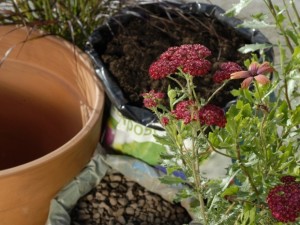 |
1. Choose as big a pot as you can, with drainage holes. The greater the volume of compost you use, the better the display will be. |
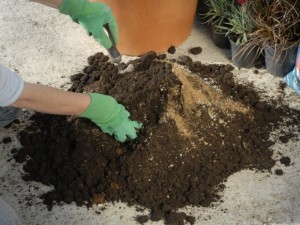 |
2. Add water-retaining granules and slow-release fertiliser to peat-based compost, to conserve moisture and promote healthy growth. |
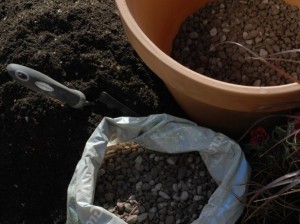 |
3. Place a generous layer of gravel or broken pieces of pot in the bottom of the pot. This will help to improve drainage and prevent water logging. |
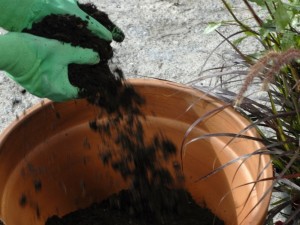 |
4. Fill the pot with compost, leaving plenty of space for a thick layer of decorative mulch to reduce evaporation. Firm the surface. |
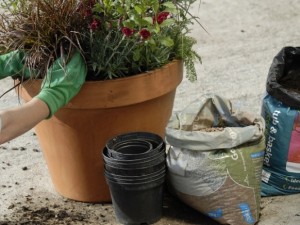 |
5. Dig individual holes for each plant. Alternatively, arrange plants on top of the compost and pack them in with more compost, as you prefer. |
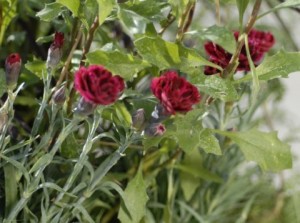 |
6. A container bursting with many different flowers in a tones of a single colour will extend interest in parts of the garden where colour is themed. |
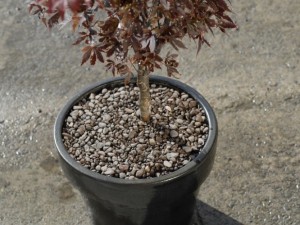 |
7. Alternatively, in a well-placed ornamental pot, plant one dramatic, sculptural foliage shrub, which will perform throughout the year. |
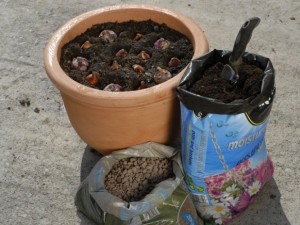 |
8. If you plant bulbs in multiple layers, you will have prolonged interest from the bulbs alone. Or, overplant them with winter-flowering pansies and primulas. |
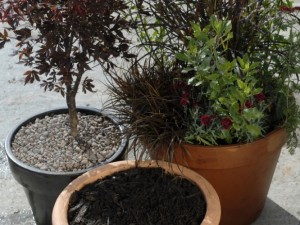 |
9. Mulch pots with a generous layer of gravel, bark or cocoa shells, to reduce weeds, conserve moisture and stop compost splashing when you water. |
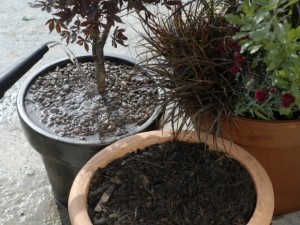 |
10. Water copiously to consolidate the compost around the roots of each plant. If you raise pots off the ground, this will aid drainage. |
Planting tips
- You must keep pots well watered. Once a week, use a high potash feed to encourage fresh flowers.
- For spring display, appealing choices would be wallflowers, forget-me-nots, double daisies, primroses and polyanthuses. Combine with tulips, hyacinths, narcissi and crocuses.
- For summer display, there is a wide choice of half-hardy annuals and other plants that are easily grown from seed in spring. Combine these with half-hardy perennials or shrubby plants such as pelargoniums, dahlias, begonias and fuchsias.
- Deadhead by removing spent flowers. This stops the plant wasting energy by producing seed, so that it will flower for longer.
- Pot plants for sunny positions include alyssum, calendula, cosmos, gazania, helichrysum, nasturtium, petunia, salvia, tagetes, and zinnia.
- Pot plants for shady positions include begonia, campanula, fuchsia, hedera, impatiens, lobelia, mimulus, nicotiana, nasturtium, and viola.
- Good bulbs for pots include chionodoxa, crocus, fritillaria, galanthus, hyacinth, iris, lilium, muscari, narcissi, and tulips.
